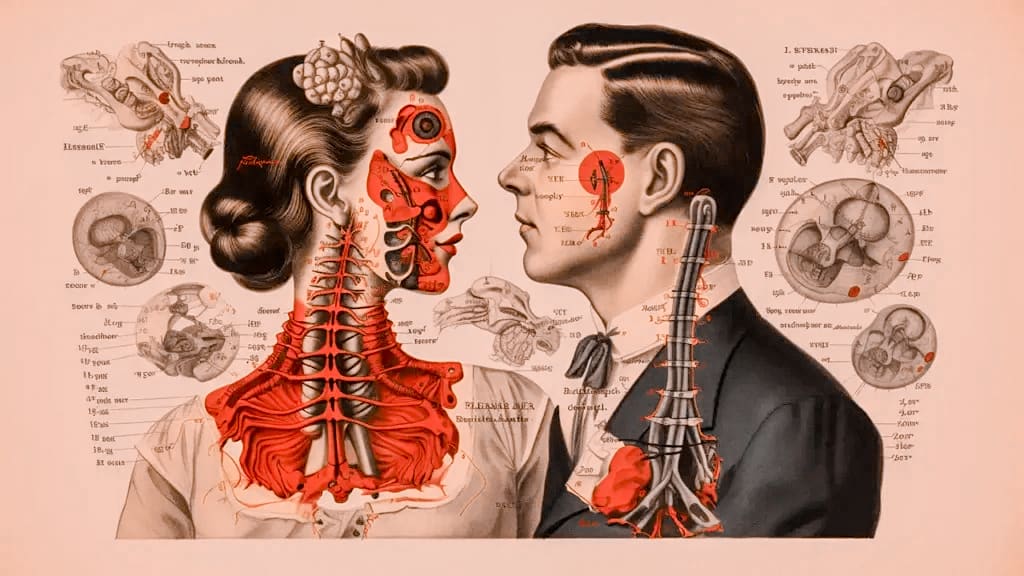Unveiling the Wonders of Human Anatomy and Physiology: A Journey Through the Inner Workings of the Human Body
Human anatomy and physiology are the cornerstones of understanding how our bodies function and interact with the world around us. From the intricate systems that keep us alive to the smallest cellular processes, the human body is a marvel of biological engineering. In this article, we'll embark on a journey through the fascinating world of human anatomy and physiology, shedding light on its wonders and practical implications.

Human anatomy and physiology are the cornerstones of understanding how our bodies function and interact with the world around us. From the intricate systems that keep us alive to the smallest cellular processes, the human body is a marvel of biological engineering. In this article, we'll embark on a journey through the fascinating world of human anatomy and physiology, shedding light on its wonders and practical implications.
1. The Foundations of Human Anatomy and Physiology
At its core, human anatomy is the study of the structure and organization of the human body, while physiology explores the functions and mechanisms that allow the body to operate. Together, these disciplines provide a comprehensive understanding of how our bodies work, from the microscopic level of cells and tissues to the macroscopic level of organs and systems.
2. Exploring the Systems of the Human Body
The human body consists of several interconnected systems, each with its own unique structure and function. These systems include the skeletal system, muscular system, cardiovascular system, respiratory system, digestive system, nervous system, endocrine system, immune system, and reproductive system. Each system plays a vital role in maintaining homeostasis, or internal balance, and ensuring the body's overall health and well-being.
3. The Skeletal System: The Framework of the Body
The skeletal system provides the structural framework for the body, supporting and protecting internal organs and tissues. It consists of bones, cartilage, and connective tissues, including ligaments and tendons. The skeletal system also plays a crucial role in movement, serving as attachment points for muscles and facilitating mobility.
4. The Muscular System: Powering Movement and Function
The muscular system is responsible for generating movement and providing support and stability to the body. It consists of three types of muscle tissue: skeletal muscle, which is responsible for voluntary movement; smooth muscle, which controls involuntary movements of internal organs; and cardiac muscle, which powers the contractions of the heart.
5. The Cardiovascular System: Circulating Life-Sustaining Nutrients
The cardiovascular system, also known as the circulatory system, transports oxygen, nutrients, and waste products throughout the body. It consists of the heart, blood vessels, and blood. The heart pumps oxygen-rich blood to the body's tissues via arteries, and returns oxygen-poor blood to the lungs via veins for oxygenation.
6. The Respiratory System: Breathing Life Into the Body
The respiratory system facilitates the exchange of oxygen and carbon dioxide between the body and the environment. It consists of the lungs, airways, and respiratory muscles. During inhalation, oxygen-rich air enters the lungs and is exchanged for carbon dioxide during exhalation.
7. The Digestive System: Processing and Absorbing Nutrients
The digestive system is responsible for breaking down food into nutrients that can be absorbed and used by the body. It consists of the mouth, esophagus, stomach, small intestine, large intestine, liver, gallbladder, and pancreas. Digestive enzymes and acids help to break down food particles, while the intestines absorb nutrients and eliminate waste products.
8. The Nervous System: The Body's Communication Network
The nervous system coordinates and controls all bodily functions through electrical impulses and chemical signals. It consists of the brain, spinal cord, and nerves. The central nervous system, which includes the brain and spinal cord, processes information and initiates responses, while the peripheral nervous system transmits signals between the central nervous system and the rest of the body.
Conclusion: Unlocking the Secrets of the Human Body
In conclusion, human anatomy and physiology offer a fascinating glimpse into the inner workings of the human body. From the intricate systems that keep us alive to the smallest cellular processes, the human body is a marvel of biological engineering. By understanding the structure and function of the body's systems, we can gain valuable insights into how to maintain health and well-being throughout our lives. As we continue to unravel the mysteries of human anatomy and physiology, we deepen our appreciation for the incredible complexity and resilience of the human body.
About the Creator
Mohamed Ali
Mohamed Ali is a passionate writer and researcher with a keen interest in exploring the complexities of human behavior and society through the lens of sociology. With a background in sociology and psychology.






Comments
There are no comments for this story
Be the first to respond and start the conversation.